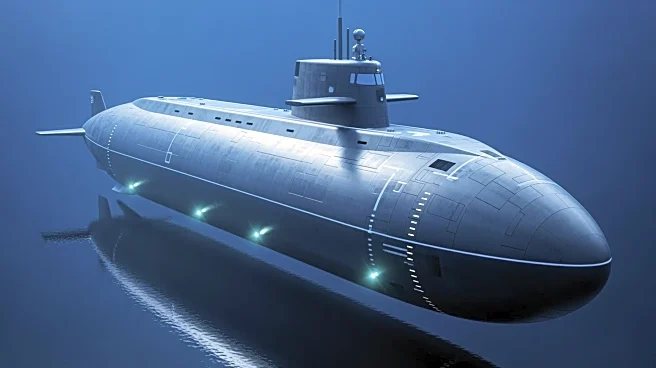What's Happening?
Russia has developed an undersea surveillance system to protect its nuclear submarine fleet using high-tech equipment acquired from U.S. and European companies through a secret procurement network. The
system, named 'Harmony,' employs seabed sensors to detect U.S. submarines entering Russian naval areas, ensuring Russia can launch a nuclear strike even if land-based missile silos are disabled. The procurement network involved front companies to obtain sensitive sonar systems, underwater drones, and subsurface antennas. The system aims to disrupt Western attempts to track Russian submarines, bolstering Russia's nuclear strategy.
Why It's Important?
The acquisition of Western technology for Russia's submarine surveillance system poses significant security challenges for the U.S. and NATO allies. The system enhances Russia's ability to protect its nuclear-armed submarines, reducing the strategic advantage of the U.S. nuclear submarine fleet. The failure to prevent Russia's acquisition of sensitive maritime technology undermines Western security and highlights vulnerabilities in export controls and sanctions enforcement. The development of the Harmony system reflects Russia's efforts to close the gap in submarine capabilities and strengthen its nuclear deterrence strategy.
What's Next?
The exposure of Russia's procurement network underscores the need for enhanced intelligence and security measures to prevent the illicit acquisition of sensitive technology. Western governments and companies must strengthen export controls and monitoring to prevent similar breaches. The U.S. and NATO allies may need to reassess their submarine tracking and defense strategies in response to Russia's enhanced capabilities. Collaborative efforts between intelligence agencies and security experts are crucial to address the challenges posed by Russia's surveillance system and ensure the protection of critical maritime infrastructure.
Beyond the Headlines
The development of Russia's submarine surveillance system highlights the complexities of international arms control and the challenges of enforcing sanctions. The use of front companies and secret procurement networks illustrates the lengths to which adversaries may go to acquire sensitive technology. The incident emphasizes the importance of international cooperation and intelligence sharing to address security threats and protect global stability. As geopolitical tensions continue, nations must prioritize investments in defense technology and strengthen alliances to counter emerging threats.












